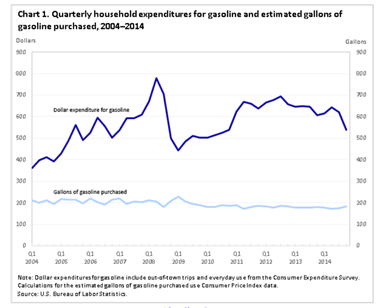Revenue Enhancement: Gain Insight Into Your Supply Chain To Make Money

Classic revenue enhancement is defined as selling the right product to the right customer at the right moment and the right price via the right distribution channel with the best efficiency. Let’s explore the importance of incorporating revenue management into a continuous business improvement cycle for the supply chain by examining this definition and how digital transformation can play an important part in uncovering blind spots when it comes to profit potential.
Where are you focusing your time? Do you spend time understanding the components of revenue enhancement and how your company can continue to improve upon them? Or do you prioritize your time on other activities, hoping that by addressing them you will gain insight into planning for demand in your supply chain?
Getting The Right Product To The Right Customer
Do you know who is buying your product? Do you know buying patterns and habits? Chances are you have some ideas, but not enough data for a thorough analysis. Even if you performed one-on-one buyer feedback sessions, you would still lack 100% of all data needed to exactly know which product is right for which customer. This is where digital transformation comes into play. One of the highest-profile examples of how a company can push the right product to the right customer is Target and how it uses analytics to determine if a customer is an expectant parent. The results were so accurate that the company had to tone down the success of the algorithm to manage customer feedback.
READ MORE: Strategic Cost Management: Uncovering Supply Chain Inefficiencies
You don’t have to have the full complement of pristine data to start answering questions. Take the data you receive from sales and couple it with the contractual data and pricing. Review years of history and watch the story unfold through business analytics. Even imperfect data will yield some results. Learn how to segment and look for patterns in the data. Let analytics at least help you narrow down the root causes of why certain customers are purchasing your product.
Customers Are Willing To Pay Different Prices
One critical aspect of revenue enhancement is understanding the customer and their price points. Customers thankfully don’t have the same needs and wants and, therefore, don’t just want to pay only one price for a product—even if that product is a commodity. It’s all about price discrimination. Different tiers and segments of customers will value the product differently for a variety of reasons. So, the maximum price that can be charged for the same product can differ based on understanding this segmentation. You can utilize digital transformation to understand and build analytics to learn if buying patterns are seasonal, short vs. long-term, or even clustered around specific events. You can also discern a customer’s sensitivity to price changes and the impact on the overall purchased amounts (e.g., price elasticity).
One great example of price elasticity is that customers will begrudgingly continue to purchase fuel when the price increases. U.S. Bureau of Labor Statistics shows the relationship of price to fuel consumption (see below). When there are no other alternatives, customers still must purchase the product. Think about your buying patterns of what you deem crucial in your life and the price increase you’re willing to bear just to get the same product.

Companies Must Be Able To Predict Some Degree Of Demand
To plan for pricing strategies, companies must have the ability to look “into the crystal ball” and predict demand for some part of the future. Demand forecasting can be either a “push” or “pull” dynamic. Digital transformation is critical for obtaining a high degree of accuracy associated with demand planning.
The key to unlocking this characteristic of revenue enhancement is to model demand and segment the mix of long-term contracts vs. short-term contracts. Understand monthly obligations and any contractual minimum and maximums required. Factor in contract performance and if you must abide by certain seasonal stipulations.
READ MORE: Lulled Into Complacency: How (Over) Managing Working Capital Harms Supply Chain Resiliency
Know your customer and implement analytical models to learn patterns of demand. Use the leading algorithms (now common in most apps) to evaluate curves that most fit and support the buying patterns. Then, step back and evaluate scenarios. Will demand differ based on price increases? Will demand differ based on competition? Will demand differ based on external events (e.g., weather factors, advertising, storms, or even a pandemic)?
Companies Must Understand Their Inventory
Don’t forget to turn your attention to inventory. This is critical for pricing and revenue enhancement. Inventory must be combined in conjunction with a forecast of demand to understand pricing strategies. It’s about balancing the opportunity cost of selling a product now vs. what you think you can command for a product in the future. Do you have to maintain minimums through your terminal and asset network? Do you have to hit targets and thresholds seasonally to have access to products during times of high demand? If you have a small footprint of assets, this can be managed in an Excel workbook. Digital transformation becomes critical to sustain and understand balancing the inventory in an inter-connected network of terminals and logistics across one or multiple geographies.
Is the product in the best location? Or does it need to be shifted and moved from a place where there are lower margins to that of higher margins?
Understand Your Relative Cost To Serve
Supply chain logistics and operations are critical to rounding out the story of revenue enhancement. New strategies cannot be employed if a company lacks the infrastructure to serve the customer base efficiently and effectively. Buying spot cargos to meet a customer obligation can destroy margin, especially if the market is volatile. Employ self-examination and introspection to determine if the mode of transportation being managed is a core competency or not. Evaluate the mix of transportation contracts available and the costs involved to utilize them. Incorporating some form of digital transformation ensures that you maximize the contracts.
Putting It All Together
The above analysis isn’t effective if done only once periodically. Also, it’s only effective if properly integrated into the core of the organization. Insight into the supply chain is best done when this is a continuous evaluation. Optimization tools provide the structure and discipline to capture the many facets discussed above. Their algorithms and AI capabilities provide an attainable way for companies to harness the power of their supply chain and understand how to maximize revenue given the complexities of the real world.
READ MORE: Supply Chain 2022 Prediction: Companies Must Fully Embrace ESG
It’s also important to develop the right metrics and KPIs to evaluate the best strategy for revenue enhancement. Can you easily see which products have the highest margin seasonally across customer types and geography? Can you see which modes of transportation services which geographies and customers most efficiently? Can you identify opportunities for inventory—reduction or increase based on strategy? More importantly, is there an S&OP executive planning session to evaluate the supply chain frequently and constantly provide a feedback loop to executives?
If the answer to any of these questions is “yes” then you’re well on your way to gaining valuable insights into your supply chain to drive revenue enhancement. However, if any of the above answers are “no”, then you may be squandering an opportunity to develop the insight and improve your overall organization.
Related Insights
Our experts are here
for you.
When you choose Opportune, you gain access to seasoned professionals who not only listen to your needs, but who will work hand in hand with you to achieve established goals. With a sense of urgency and a can-do mindset, we focus on taking the steps necessary to create a higher impact and achieve maximum results for your organization.
LeadershipGeneral Contact Form
Looking for expertise in the energy industry? We’ve got you covered.
Find out why the new landmark legislation should provide a much-needed boost for the development of carbon capture.




